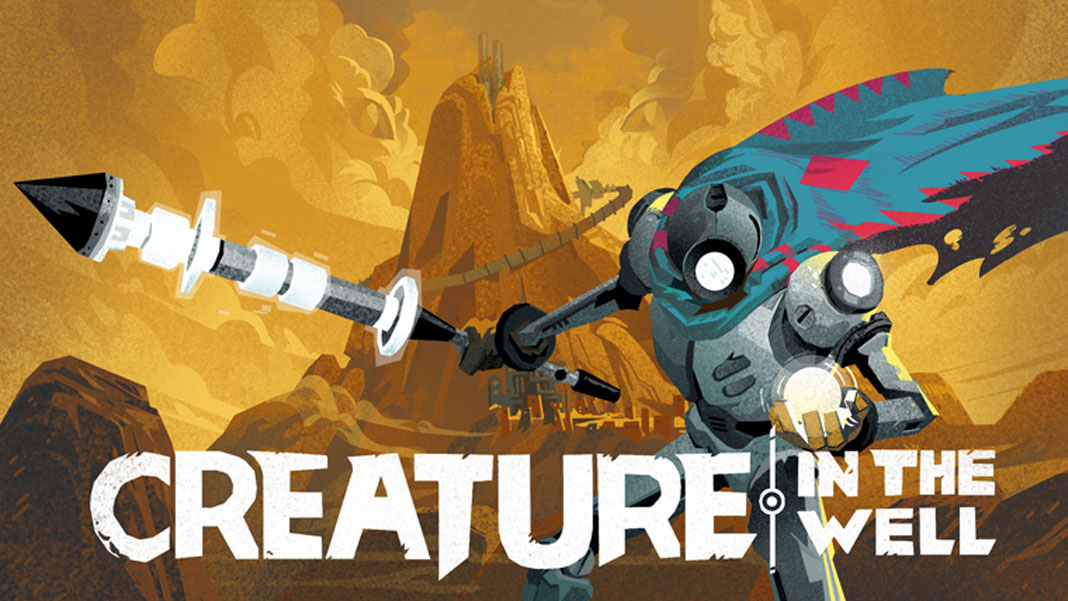Playable for the first time at GDC 2019, Creature in the Well is Flight School Studio’s newest project. It was part of the Indie MEGABOOTH at GDC, providing a chance for players to try it out. When I first laid eyes on it, the title was immediately arresting, with eye-catching promotional imagery. The story of Creature in the Well also proved intriguing with its focus on a lone robot’s quest.

The game starts with a town trapped in the middle of an eternal sandstorm. A facility is built in a desert mountain, designed to control the weather. Unfortunately, construction awakens a gigantic beast from the depths of the mountain, and they ravage the facility and annihilate the robots built to maintain it. Only one robot survives, and they must revive the facility to stop the sandstorm and allow the town to escape. But the Creature stands in their way, hellbent on making sure the facility remains inactive.
With nonhuman characters in the spotlight and other details, the story feels unique, and the gameplay has a touch of that too. Bohdon Sayre, co-creator of Creature in the Well and a game director at Flight School, said the upcoming title is a top-down, action-adventure, hack-and-slash game inspired by pinball and Breakout during the days of Pong.

“[We] wanted familiar, Zelda-like controls, but gain mastery over an external thing,” Sayre said. He added that inspiration for that was drawn from Rocket League, air hockey, and soccer.
I was interested in the story, characters, and art of Creature in the Well, but the gameplay description gave me pause. I personally enjoy hack-and-slash, but I wasn’t sure about mixing in pinball. How would it work? Playing the demo removed any uncertainty I had.
Small Ways to Immediately Engage
I waited a few seconds for the game’s main menu to show a message like “Press Any Button to Start.” I did this until I realized I could already move my robotic character. At that moment I was delighted by what felt like something novel and became even more charmed by the game.
Sayre told me this was inspired by Mario hitting blocks to load save data in Super Mario Sunshine. He explained that the team didn’t want a moment where the player was not in control.
Want You Gone
I press forward with my Robot, entering the abandoned facility—Sayre also refers to it as the “temple”—that needs to be revived. I’m pleasantly shocked that it isn’t long until I have my first glimpse of the eponymous Creature.
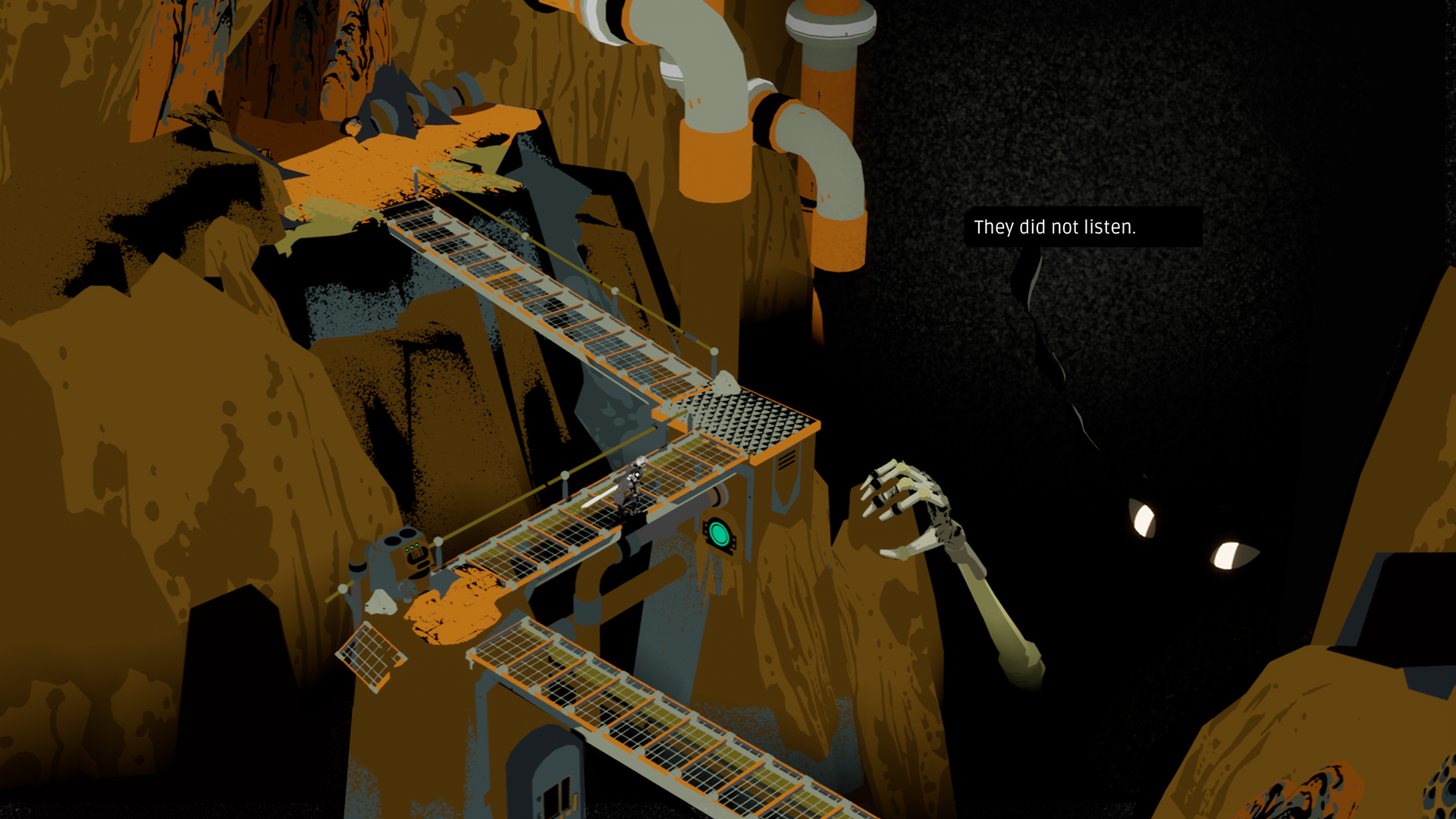
It’s an eerie scene where you can only catch scraps of the monster peeking out of the shadowy depths, and realize how much bigger they are when compared to your Robot. It’s a size difference that not only jumpstarts the game with a certain disquiet, but also makes your Robot more endearing with the new perception of them as small and vulnerable.
Sayre said the Creature—unsurprisingly—will growl later. What’s more surprising is the origin of the growl. Sayre shared that the game’s sound designer, Frank Pittenger, found the sound of rubbing violin strings against the needles of a cactus online.

Violin strings rubbed against cactus needles were later used for the Creature’s growling. “I love creative recordings,” Sayre said.
While the GDC demo did not feature the Creature’s dialogue, Sayre said that would be in the final release. The game’s website has a screenshot with one of their lines. Confirmation that the Creature will also speak heightens my excitement.
“The creature directly confronts you,” Sayre said. “It’s very vocal about what it wants, and it doesn’t want you to be there.”
Hack-and-Slash-and-Deflect
I continue onward through the dungeon, or what Sayre describes as the “monolith.” He explains that there are eight monoliths for the Robot to revive if they want the temple functioning again. As my Robot progresses through this particular monolith, I soon understand how pinball is incorporated.
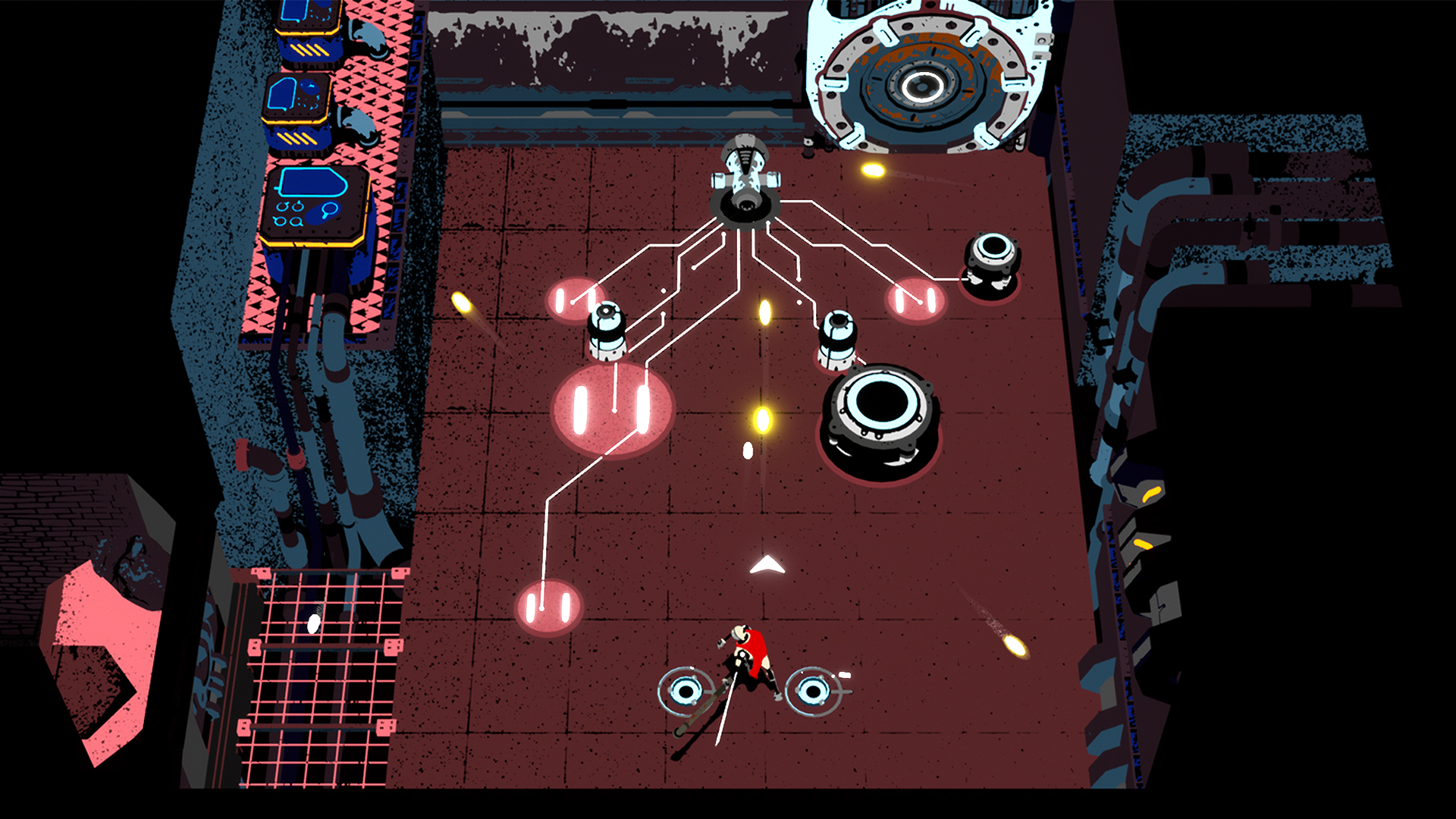
My Robot can pull off the familiar and fun rush of hack-and-slash action—but that is largely done to hit energy orbs into non-sentient machines. I had to maneuver my striking Robot to angle shots at certain targets.
This mix of hack-and-slash with underlying pinball mechanics turned out to be really enjoyable. It was an entertaining mix of familiar frenzied action with a new level of thought and strategy to consider.
It actually reminded me more of that other inspiration Sayre mentioned—air hockey. I am more familiar with air hockey, which definitely asks the player to physically reach out and hit the puck, and even angle yourself to get the shots you need. That felt more reminiscent of what my Robot was doing—really physically reaching out and angling to hit orbs into targets.
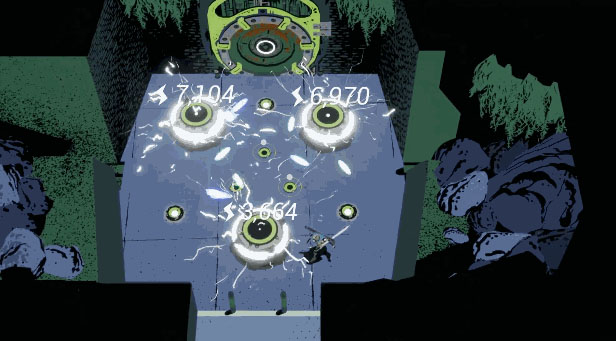
Drag You Down
My Robot hasn’t really fought anyone through all of this. When they hack away, it’s often just to hit orbs into machines that will give up enough energy to open the next temple door. The game has figured out a way to maintain the feel and fun of hack-and-slash while removing the element of directly attacking enemies, and that’s fascinating.
Even when some of the targets start shooting projectiles, the Robot can deflect them away or back to where they came from. They can also just dodge. But the Robot can’t directly attack back.
This all culminates in an insane boss fight with what feels like a sharp rise in difficulty. When my Robot reaches a platform suspended in the dark, the Creature’s large claws reach up and yank the platform rapidly down, taking my Robot on a threatening elevator-like descent.
“[The] Creature pulls you down and you have to fight your way back up,” Sayre said. He added that each monolith has a unique theme and mechanic that’s tested by the concluding boss fight.

The Creature lets go of the platform, leaving my Robot at the mercy of many machines attacking all at once. Sayre says the Creature has been manipulating them to stop my Robot.
Fight the Power
The following boss fight is chaotic and frantic. Several things run through my mind: try to figure out what to do; quickly maneuver my Robot out of the way of several attacks; rapidly hack and slash away.
Eventually, I realize it’s like what came before, just amplified several times over. My Robot angles to deflect projectiles into the right targets to neutralize the attack. The strategy works, and eventually, it’s over. My Robot gets to walk away, while the Creature slips back into the dark.
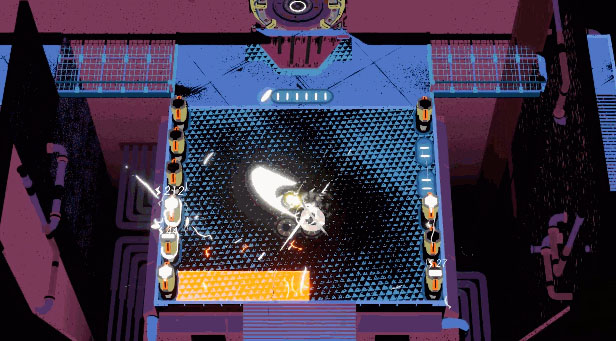
Sayre shared that the team tried to have the Creature confront your character without direct violence, and without you directly attacking them. He added that it’s about you sabotaging the Creature’s efforts and achieving the Robot’s goal, which is only to revive the temple, not fight.
“I really like the boss fights,” Sayre said. “The creature wants to stop you, but you have to find a way to move forward and not let it slow you down.”
The demo ends with catching my breath after that boss fight. The Robot has a quiet moment reaching a new area of the temple. They read through messages left behind that provide more details about the game’s world and story. The Robot then throws a veritable switch, and power returns to one monolith of the temple. There’s still more to do, but the Robot’s making progress.
Not a Human in Sight
A team of two people in Montréal have been creating the bulk of Creature in the Well—Sayre, primarily in charge of programming, and his co-creator Adam Volker, who largely handles the art. (Sayre mentioned that Flight School has another team in Dallas that focuses more on emerging technology.)
According to Sayre, Creature in the Well—scheduled for release this summer—will be Flight School’s first game on Nintendo Switch. He also described it as ultimately the studio’s first major indie title.
When asked about more influences for the game, Sayre immediately pointed to Mike Mignola for the art style. He added that the game’s “high contrast and deep blacks” are definitely drawn from Mignola’s iconic Hellboy.
Sayre said that comics, in general, have been influential on the look of Creature in the Well. “That graphic art, big shapes, and clear lines.”

There are eight types of strike tools and charge tools to unlock in the game.
He added that Hyper Light Drifter and Hayao Miyazaki were also influences. Sayre said that Miyazaki was particularly inspiring in terms of creating Creature in the Well with a nonhuman world populated by a nonhuman cast.
“Always the connection between animals and humans, and I like that,” Sayre said when talking about Miyazaki. “I like presenting characters as creatures, as animals. Feel like there’s something mysterious about that. Feel like [we] look at humans so much, it’s refreshing to see new shapes and styles.”
Sayre added that this applied to a previous VR experience he and Volker helped create at Flight School—Manifest 99, which was filled with spirit animals.
Unique Denizens
The GDC demo focuses on characters like the Robot and the Creature, but there’s even more to the nonhuman cast.
Sayre shared that other characters will hide from the player’s Robot, fearful of what seems to be an unknown stranger. It’s been generations since the temple was active, and the townspeople’s descendants have forgotten there is anything beyond the storm that traps them. But Roger the frog janitor remembers the tales that his parents told him about the temple’s purpose before.
Besides Roger, Sayre also talked about Danielle, the crocodile blacksmith that can upgrade the Robot during their journey. As they restore the old facility and power to the local town grid, Danielle will be able to give them better upgrades.
The Robot can even upgrade their look with a Danielle-themed cape. “You can wear her colors,” Sayre said.
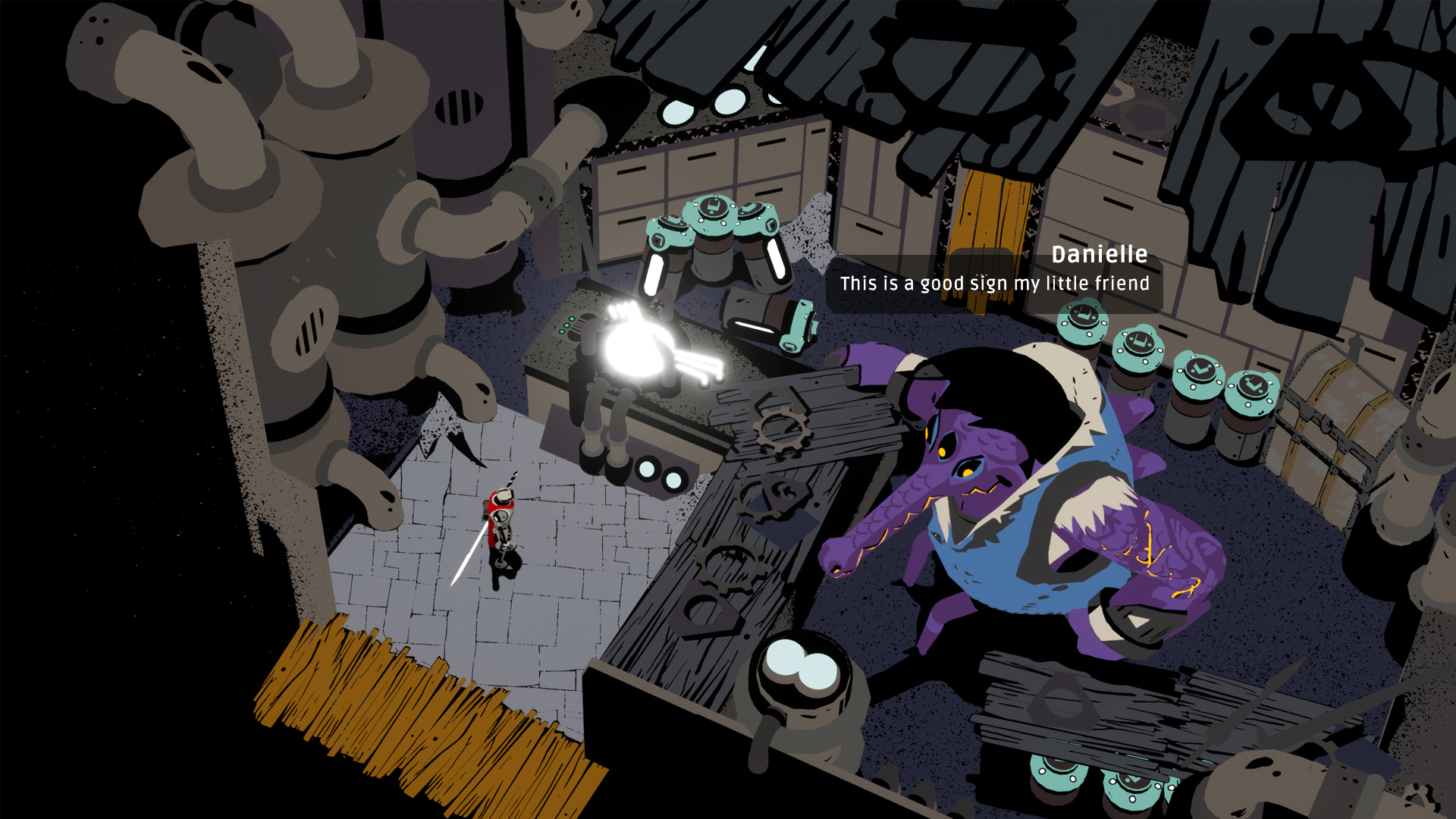
Besides the cape with Danielle’s colors, the Robot can find other capes worn by a variety of lost robots. “Wear them as almost a tribute to the other fallen robots,” Sayre added.
Fallen Brethren
He explained that the player’s Robot wasn’t the only one designed to maintain the temple in the desert mountain. They’re one of several robots that had been constructed to keep power running in the temple.
The robots were later destroyed by the Creature’s apparent fury at any intruders, with the player’s Robot as the only known survivor. Sayre said that the Robot can find the broken and powered-down bodies of their people “in secret areas” of the game.
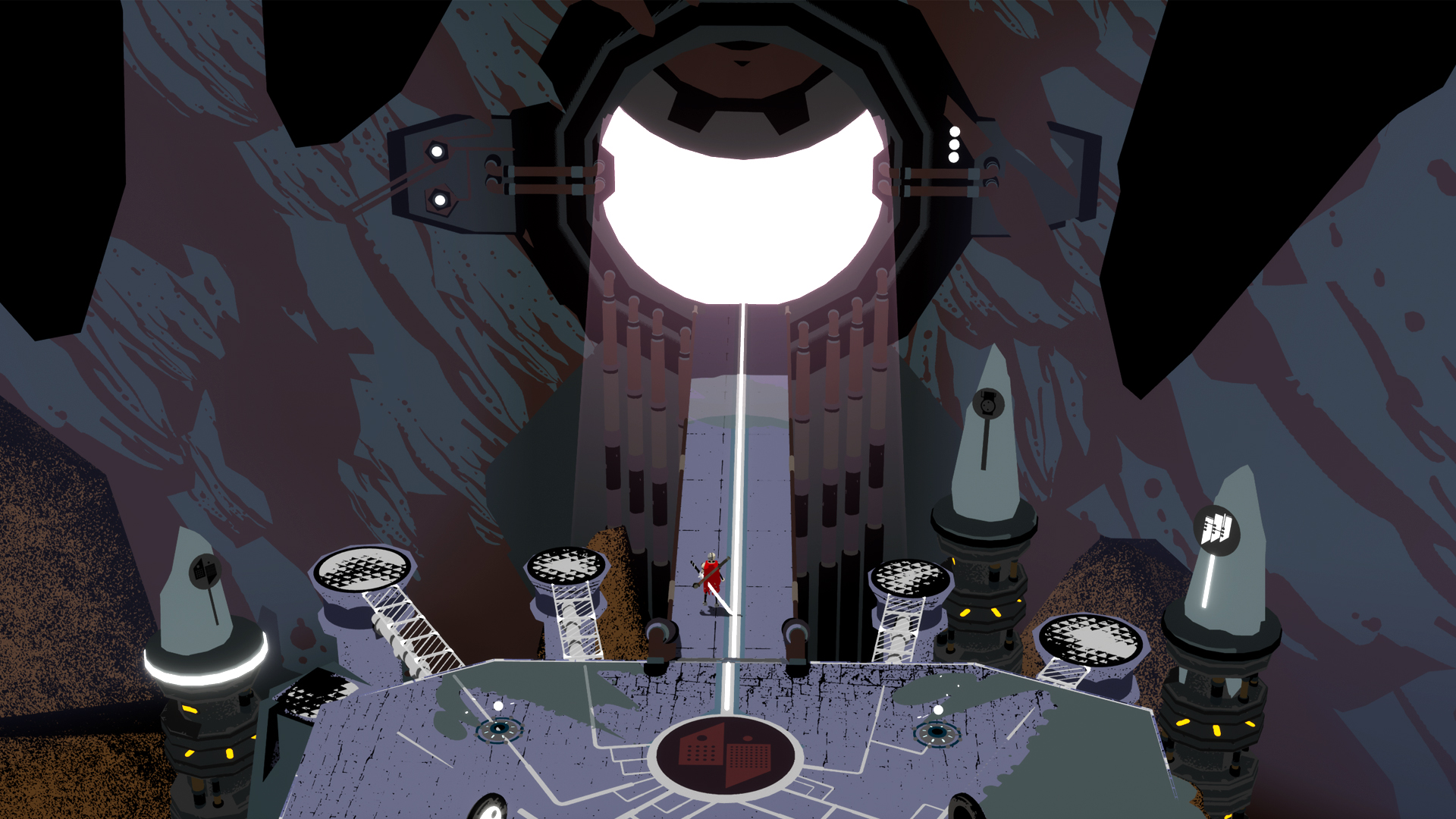
When the robots disappeared one by one, their creators were clueless. Sayre said that they only had recordings of what the robots heard. The creators never understood that the Creature was there, and would later ravage their temple.
Sayre felt that when the Creature started to destroy the robots, they tried to flee. He added that the player’s Robot wakes up in the middle of the sandstorm at the beginning of the game, apparently the last of their kind.
The robots are unique according to Sayre. “They are the only ones who can survive that sandstorm.”
